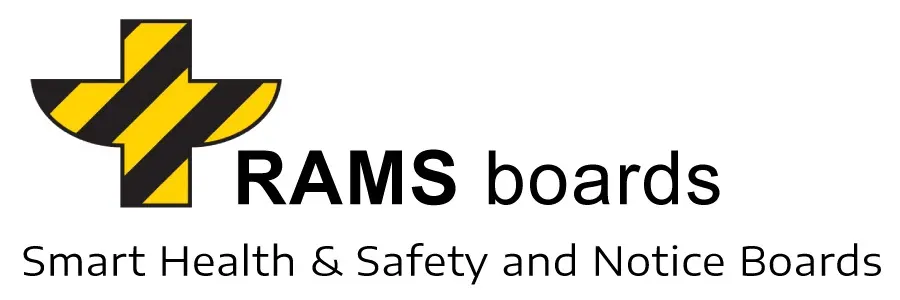Yes, RAMS boards can indeed be effectively used in conjunction with other visual management tools, enhancing the overall impact and efficiency of workplace communication, especially in construction and industrial settings. This synergistic use of RAMS boards alongside other tools can significantly boost the effectiveness of safety, health, environmental, and quality (SHEQ) communication strategies. Here’s a more comprehensive understanding of how RAMS boards complement other visual management tools:
Complementary to Other Visual Tools:
- Integration with Signage and Markings:
- RAMS boards can be used alongside traditional signage, such as warning signs, directional markers, and informational placards. They can serve as a central hub for comprehensive information, while smaller signs placed around a site provide specific, location-based instructions or warnings.
- Collaboration with Digital Displays:
- For sites employing digital displays or electronic information boards, RAMS boards can act as a physical, static counterpart. While digital screens may offer real-time updates, the RAMS boards can provide consistent, fundamental safety and procedural information that remains relevant over time.
Enhanced Information Dissemination:
- Consistent Messaging:
- Using RAMS boards in conjunction with other tools ensures consistency in messaging. The boards can reinforce the information provided through other mediums, ensuring that all workers receive and understand critical safety and operational messages.
- Targeted and Broad Communication:
- While other tools might target specific areas or tasks, RAMS boards can present a broader range of information, making them ideal for general guidelines, site maps, emergency procedures, and multilingual communications.
Versatility and Customization:
- Adaptability for Specific Needs:
- RAMS boards can be customized to complement specific visual management strategies. They can incorporate company branding, specific color schemes, or be adapted to include digital screens and IoT devices for a more integrated approach.
- Flexibility for Changing Environments:
- In dynamic work environments, the information on RAMS boards can be easily updated or changed, complementing the more dynamic visual tools used on the site.
Safety and Regulatory Compliance:
- Reinforcing Compliance and Best Practices:
- When used alongside other visual management tools, RAMS boards help reinforce legal compliance and industry best practices. This is particularly important in sectors with stringent safety regulations.
- Multifaceted Approach to SHEQ:
- By covering various aspects of safety, health, environment, and quality, the combination of RAMS boards with other tools creates a comprehensive visual management system, enhancing overall workplace safety and efficiency.
Conclusion:
In conclusion, the integration of RAMS boards with other visual management tools forms a robust and comprehensive communication system. This combination leverages the strengths of each tool, ensuring that crucial information is conveyed effectively and consistently. In environments like construction sites, where safety and clear communication are paramount, this synergistic approach plays a critical role in maintaining high standards of SHEQ, ultimately contributing to a safer, more informed, and efficient workplace.
